Growing guide
How to grow Impatiens
These plants have long-lasting flower power, producing masses of blooms all summer, in vibrant colours and soft pastel shades. Whether you raise them from seed or cuttings for summer bedding, grow them as houseplants to thrive in indirect light, or choose those that grow outdoors all year, here's all you need to know to get the best from your plants.
Quick facts
- They provide long-lasting summer flower colour
- Available to buy as bedding plants in late spring and early summer
- Suitable for summer container displays
- Impatiens can be propagated by seed or cuttings
- They grow well in part-shade
- Some Impatiens are grown as houseplants
- Hardy varieties grow well year-round in shady gardens
All you need to know
Choosing the right Impatiens for you
There are several commonly grown Impatiens; the type you choose will depend on where you want to grow it and how long you intend to keep individual plants for.For summer borders and containers:
- In part to full shade, cultivars of Impatiens walleriana (busy Lizzie), or I. hawkeri (New Guinea hybrids) grow well. These are compact in habit and grow up to 50cm tall
- For something taller, up to 75cm, consider growing I. balsamina
- Some cultivars grow well in full sun, such as the SunPatiens and Sun Harmony series. They flower from early summer to autumn
- I. hawkeri (New Guinea hybrids) thrive in bright but indirect light indoors, often flowering year-round. Their leaves are sometimes
Variegated means having leaves or other plant parts with streaks, blotches or patches of different colours. Typically, these would be a combination of two colours, such as green and gold or green and white.
- For something unsual try I. niamniamensis (parrot plant) with dramatic hanging yellow and red flowers
- Grow hardy species like I. arguta and I. stenantha in a sheltered shady position
- I. tinctoria will survive outdoors in sheltered areas if protected with a winter mulch
Buying
- Impatiens for seasonal colour (bedding plants) are widely available in multi-plant trays or individual pots from most garden centres, nurseries and some supermarkets in late spring
- Growing plants from seed may provide you with greater choice in terms of colour and variety
- Cultivars of Impatiens hawkeri (New Guinea hybrids) and I. niamniamensis (parrot plant) are commonly grown as houseplants. You may find these sold alongside other houseplants in garden centres, but those sold as
Bedding plants are usually colourful half-hardy, short-lived or annual plants, grown for displays in beds or containers. They may be changed seasonally, with spring, summer and winter bedding displays each using different plants of appropriate hardiness and flowering times.
- Hardy cultivars of Impatiens are less frequently sold in garden centres. You may need to source these online from a specialist nursery – search RHS Find a Plant here
RHS guide to buying garden centre plants RHS guide to buying mail order plants
Impatiens grown as summer bedding plants are killed by frost and set back by low temperatures, so plant them outdoors when nighttime temperatures are above 7°C, usually in late May or early June. Harden off young plants, to acclimatise them to outdoor conditions, before planting them out. How you plant your Impatiens depends on where you want to grow them.
In containers
Impatiens make a long-lasting summer display of flowers in pots, hanging baskets and window boxes. They are especially useful for areas that are shaded, or only get morning or late afternoon sun. A peat-free multi-purpose compost is suitable for growing Impatiens in containers outdoors and indoors.
In borders
You can plant tender cultivars into beds and borders as part of a summer bedding display, or use them to fill in gaps around or under permanent planting. Hardy cultivars are best planted in late spring in a sheltered spot. Impatiens grow well in most garden soils, but if you have light, poor soil, add one bucketful of well-rotted organic matter per square metre/yard, before planting.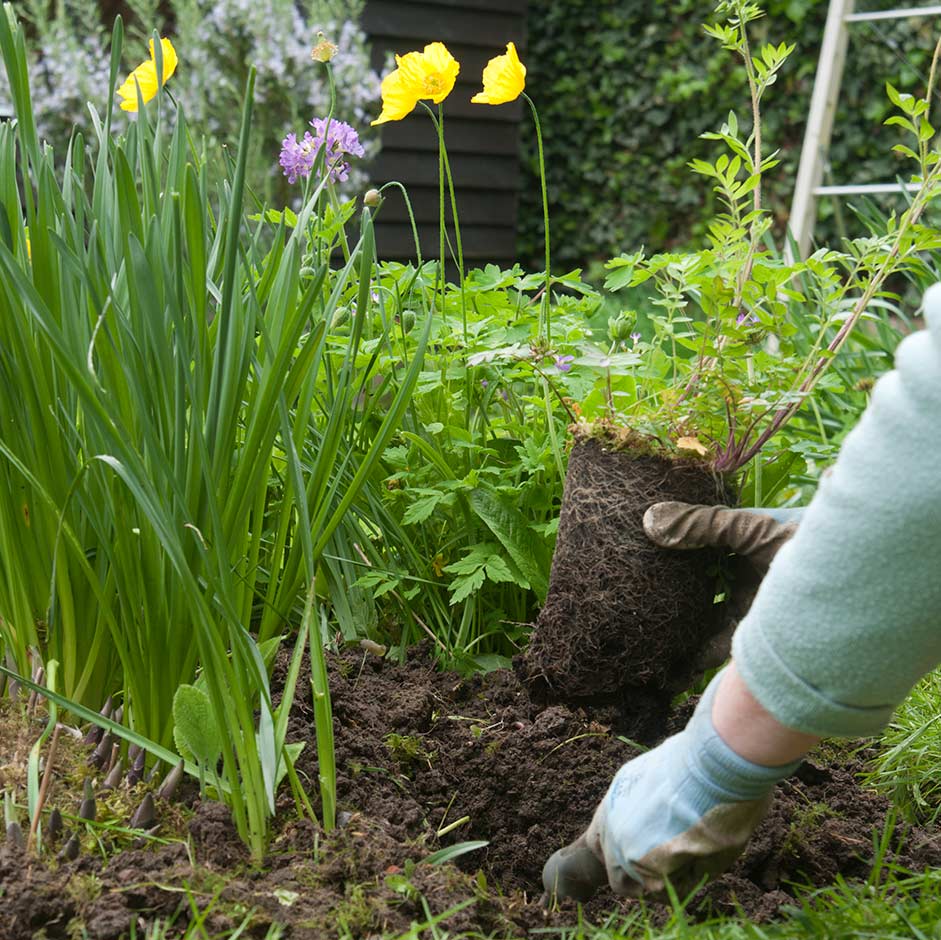
Perennials: planting

How to plant a hanging basket

RHS Guide to bedding and displays
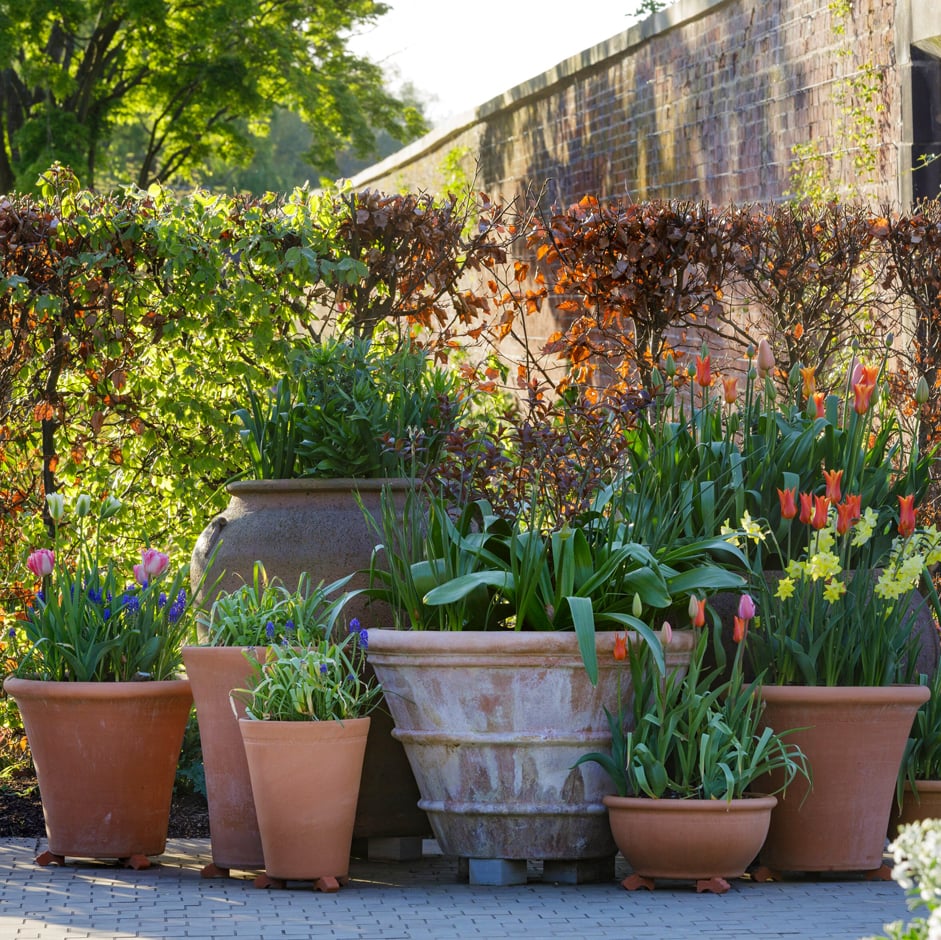
RHS guide to planting up containers
Impatiens need very little regular maintenance after planting but to keep plants happy and healthy see our advice below.
Watering
- Keep compost or soil moist (not soggy) and don't allow your plants to dry out entirely
- Water houseplants freely during spring and summer, but reduce watering in winter, keeping compost just moist
Water: collecting, storing and re-using Watering
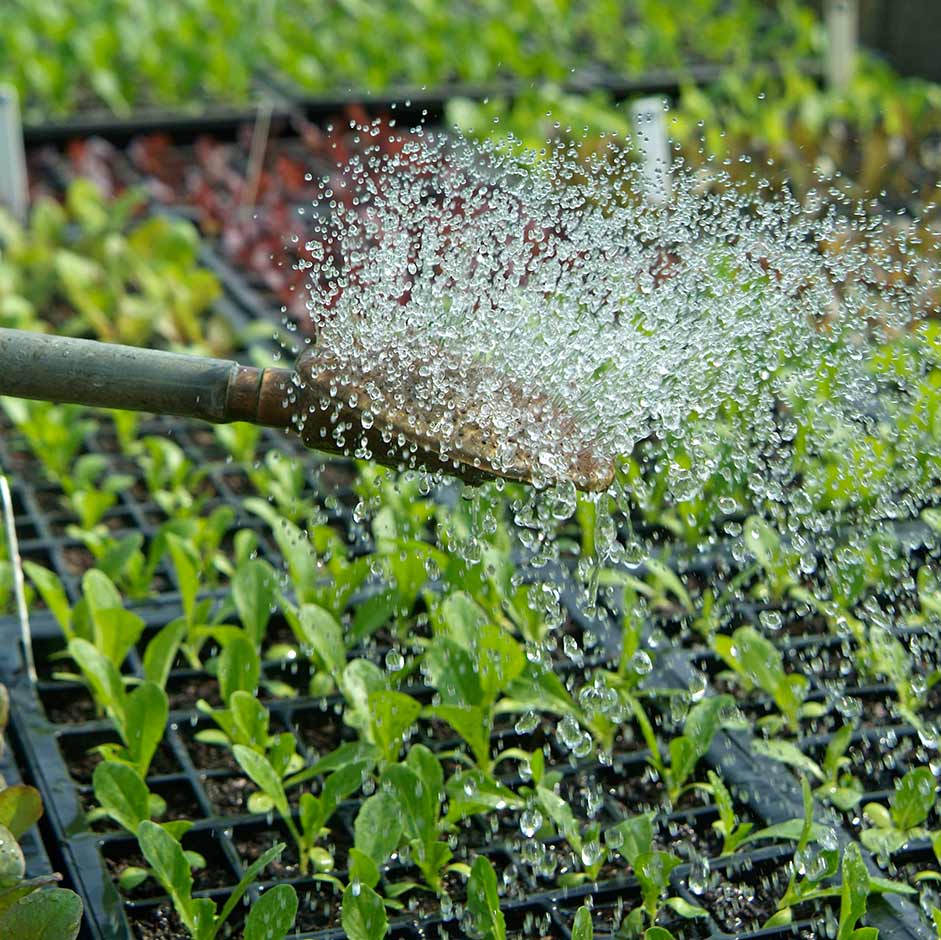
Deadheading
- You don't usually need to deadhead your plants (unless they form lots of seedpods), but removing faded flowers keeps plants looking tidy

Deadheading plants
Feeding
- Plants growing in containers can be fed with an organic-based liquid seaweed fertiliser as per the instructions on the label
- Adding garden compost or any well rotted organic matter when planting into a border should provide sufficient nutrients for good plant growth. If plants start to show signs of poor growth or nutrient deficiencies then see our feeding plants page for more information
- Houseplants can be fed with a housplant feed from March to October, as per the instructions on the label
RHS guide to feeding plants Nutrient deficiencies

Overwintering
- Impatiens grown for seasonal summer colour, in bedding and container displays, are tender perennials and are usually dug up and composted at the end of the growing season in early autumn
- If you wish to take cuttings, rather than buying new plants next year, pot up your plants and bring them into a greenhouse or conservatory with a minimum temperature of 10°C
- You can treat tender perennial species, such as Impatiens tinctoria, like dahlias by lifting or mulching
- Hardy cultivars will survive outdoors in a sheltered position
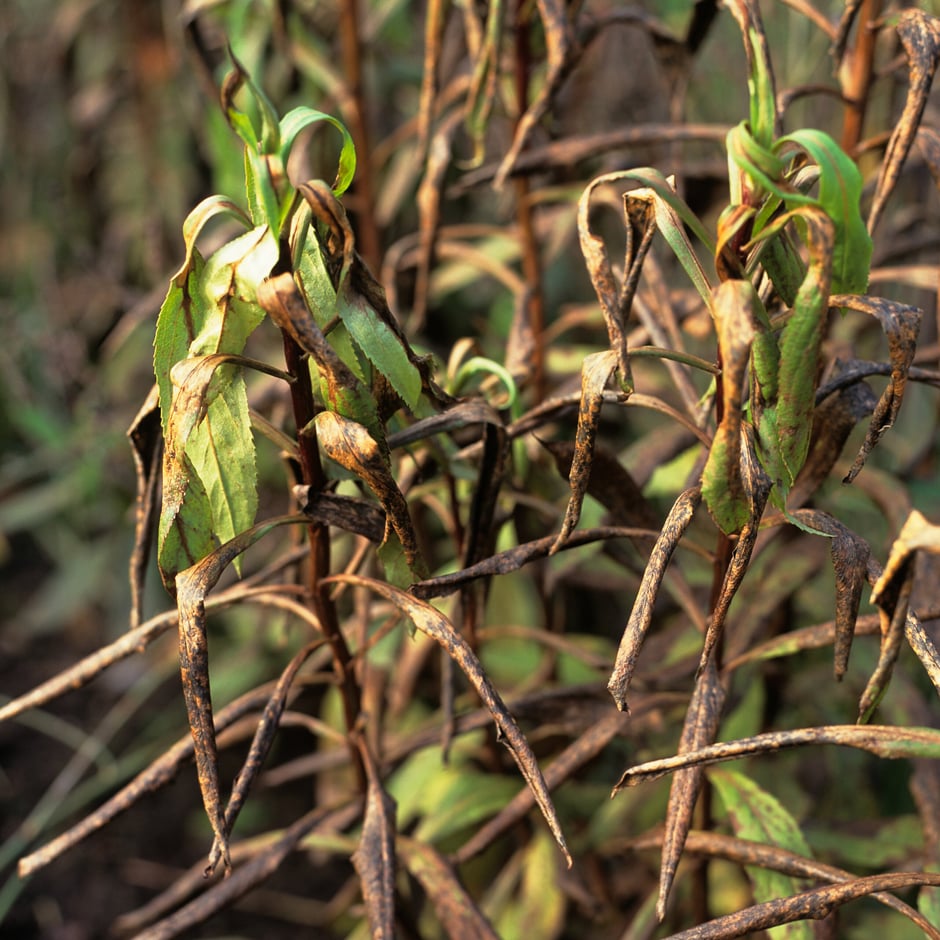
RHS guide to the risks of frost damage

RHS guide to overwintering tender plants
The two main methods of propagating Impatiens are by seed and by cuttings.
Seed
Sow collected (or bought) seed undercover in spring. Sow into modular seed trays filled with moistened peat-free seed compost. Place a couple of seeds into each cell and cover with a light dusting of sieved compost. Cover with a plastic lid and place in a bright spot at 18 - 20°C. After germination, which can take two to three weeks, keep seedlings in a frost-free place, such as a greenhouse or windowsill, in good light but out of direct sunlight.
How to sow seeds indoors
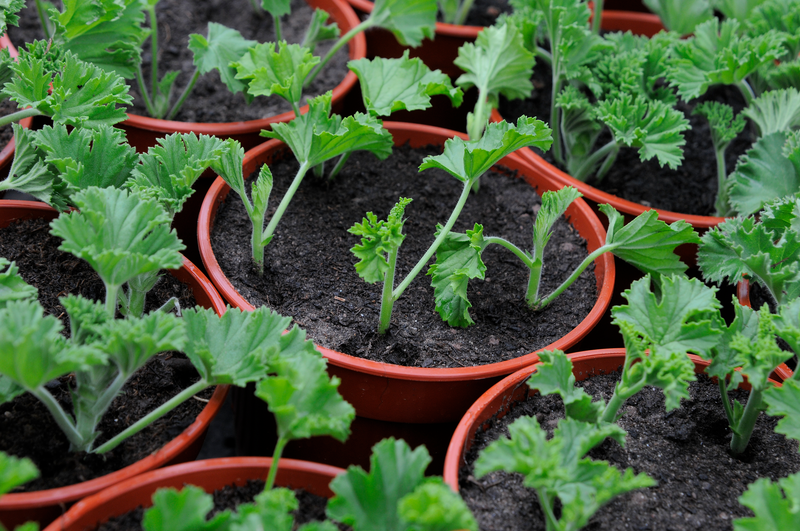
How to use peat-free compost: for seeds and cuttings
Invasive species
Impatiens glandulifera (Himalayan balsam) is an invasive non-native species. It is illegal to cause Himalayan balsam to spread, and there are restrictions on growing, cultivating, selling and transporting it. For information on control methods, see our advice page on Himalayan balsam.
Cuttings
Impatiens root easily from softwood cuttings taken in spring from overwintered or bought plants. Cuttings taken in early spring should be ready to plant outside in early summer. Stem cuttings will also root by removing the lower leaves and immersing the bottom couple of centimetres in water. Cuttings: softwood
Please be aware that some Impatiens are protected by Plant Breeder’s Rights, and you are not allowed to propagate them for sale.
- Damping off is a fungal pathogen that causes withering of seedlings. Try to keep compost moist but not soggy. Sow into fresh peat-free seed compost and use tap water when watering seedlings
- Impatiens downy mildew affects cultivars of Impatiens walleriana (busy Lizzie) causing yellowing and rapid defoliation of plants. Dispose of affected plants. Raising from seed may reduce occurences, but spores can persist in gardens where affected plants were previously grown. Some resistant cultivars are available. I. hawkeri cultivars (New Guinea hybrids) are not affected
- Grey mould (Botrytis) appears as a furry grey-brown growth on buds, flowers and leaves. High humidity encourages its spread. Remove affected growth when seen. Overcrowding of plants is sometimes a factor, so increasing planting distance can help
- Vine weevil larvae can chew the fleshy roots of Impatiens. Plants in containers are particularly vulnerable if vine weevil larvae are in the compost. Adult beetles (which lay eggs) can be removed by hand. Biological control, in the form of nematodes, is effective against the larvae
- Glasshouse red spider mite can affect houseplants, and plants outside in hot dry weather
- Aphids may feed on the sap of plants, particularly on young soft growth

Discover Impatiens
Everything you need to know about choosing the right Impatiens for you.
Get involved
The Royal Horticultural Society is the UK’s leading gardening charity. We aim to enrich everyone’s life through plants, and make the UK a greener and more beautiful place.